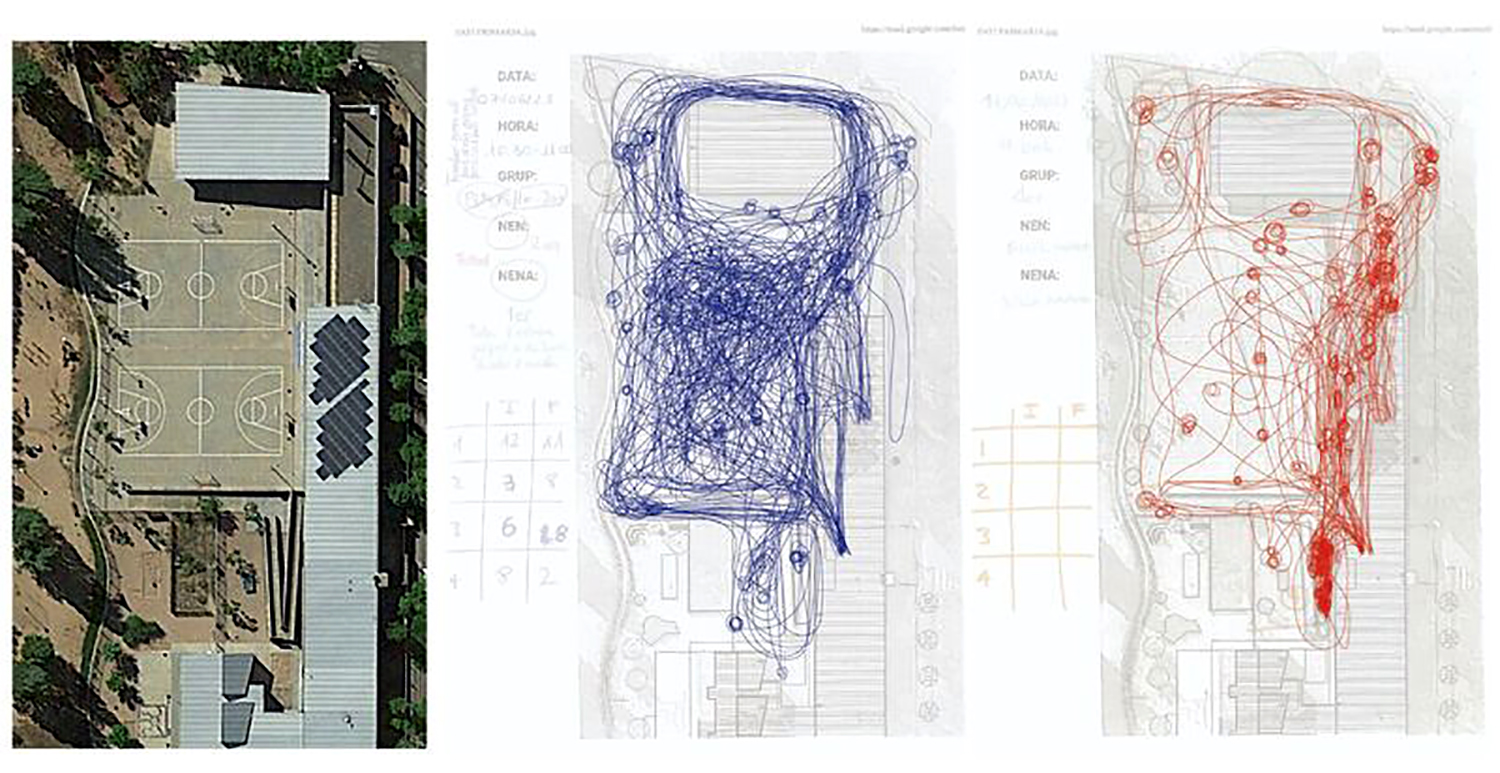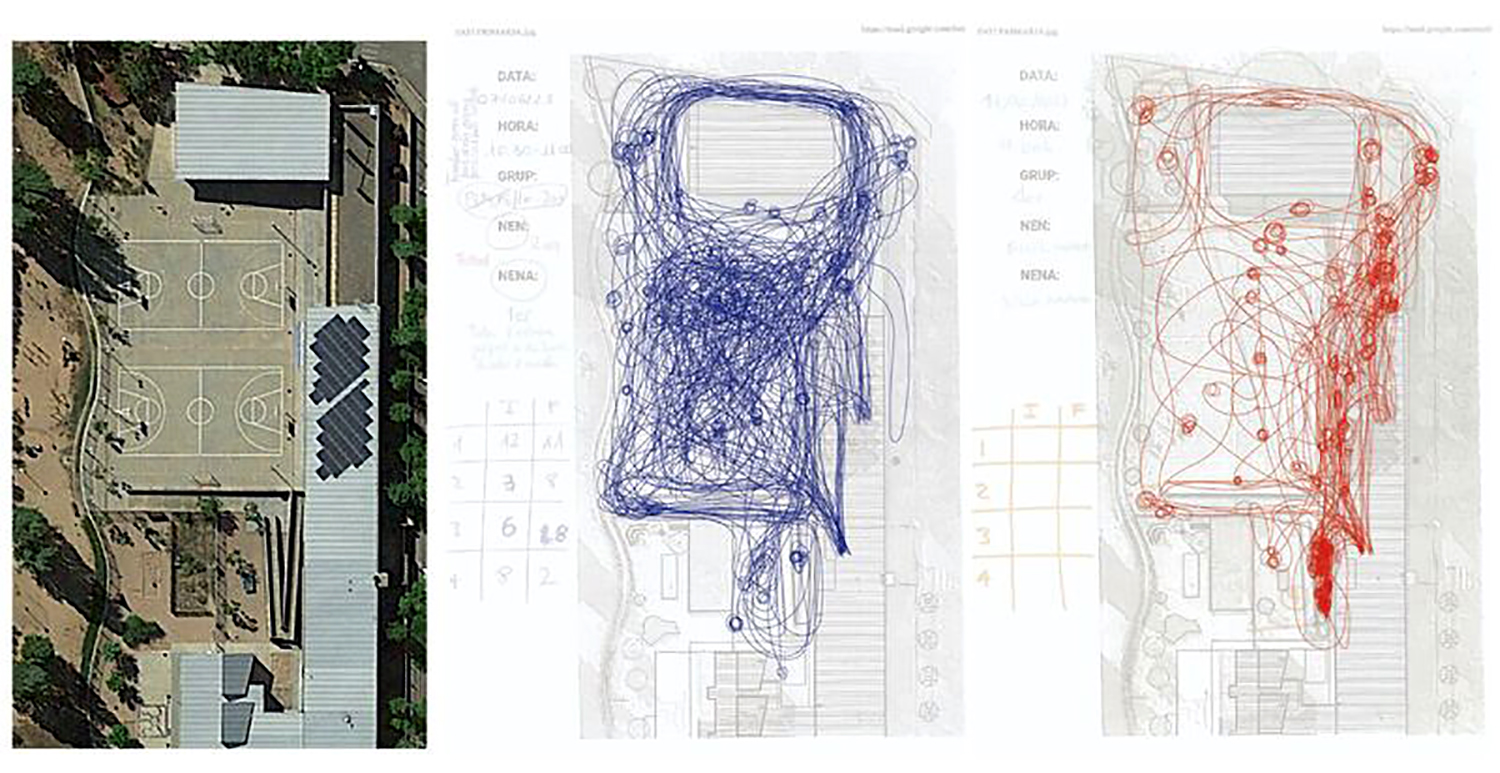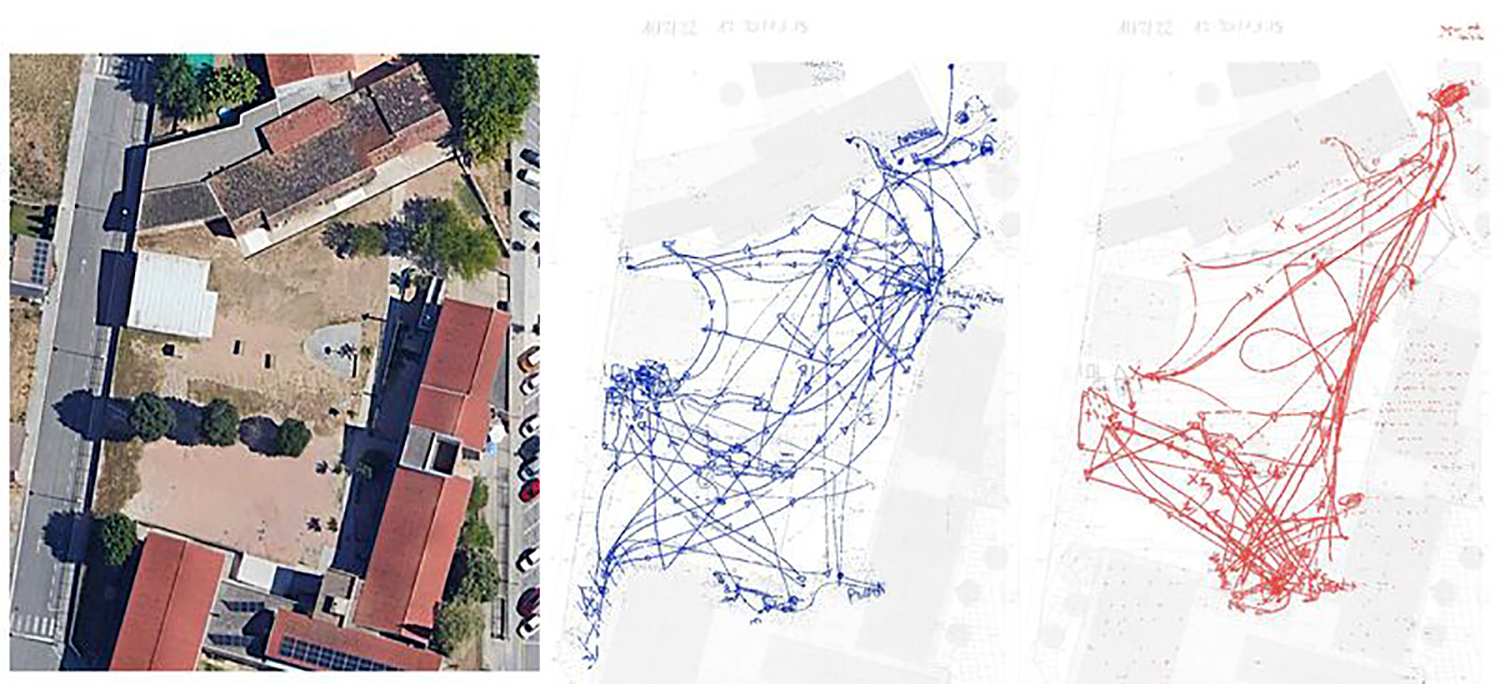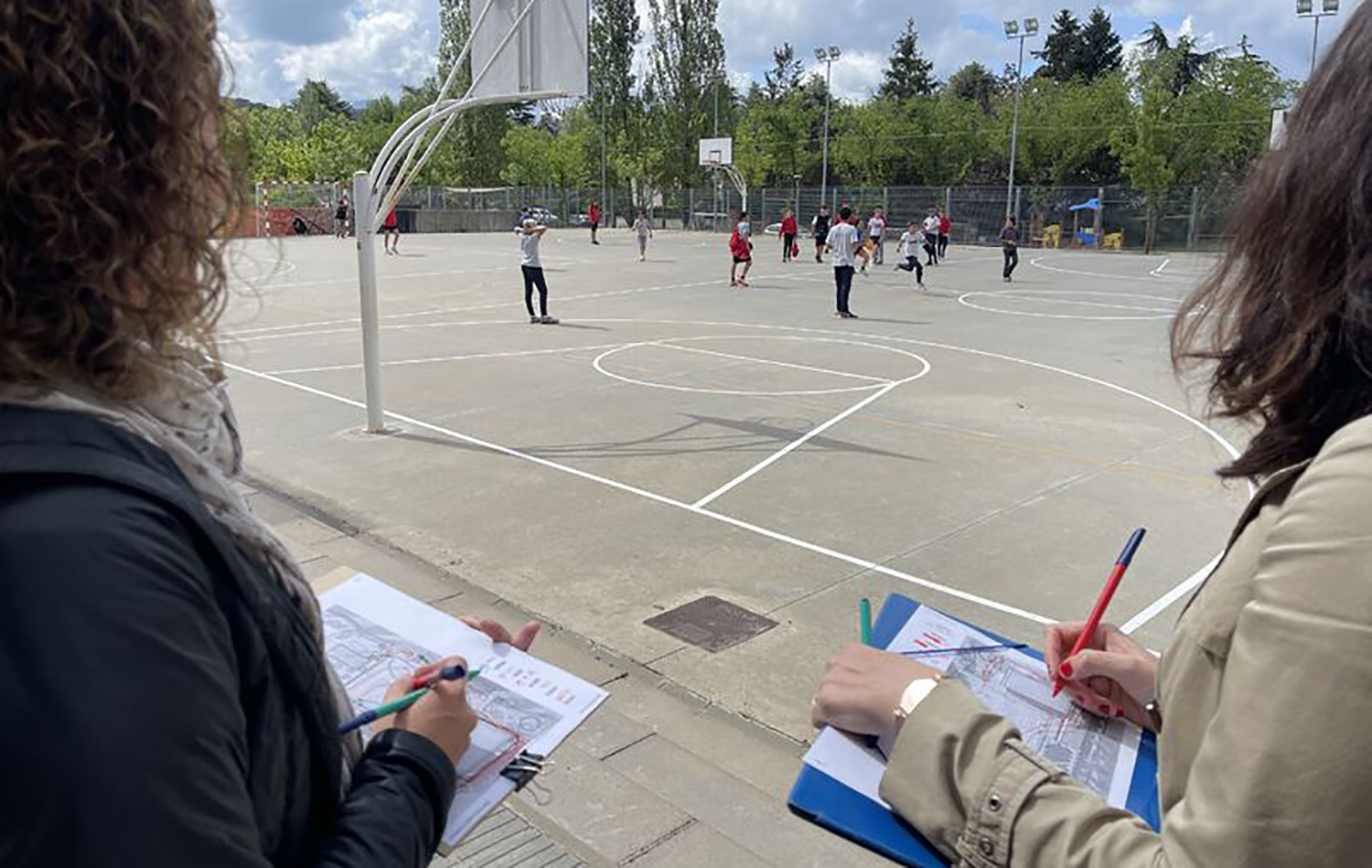
- During one year, two schools in Catalonia have observed the movements of elementary school children during recess. Most of the space is occupied by boys and girls moving on the margins. Research has left reflections on the organization of space, gender roles ... and football.

“The center of the school patios is occupied by physically active and strong children, mostly boys (represented in blue) and the less active ones leave the space to move in the peripheries, especially girls (represented in red). This reality is even more evident when designing spaces based on football.” This is what the study by the architecture cooperative Architectonicz says. It shows the use of space by children during recess according to gender. These movements have been observed by the faculty.
No one will be surprised by the result, knowing that both gender roles and space design influence this reality. Beyond the rules established by adults, school courtyards are spaces of displacement and autonomous play, where many stereotypes and social patterns are reproduced.
On the one hand, girls do not have the habit of taking the center and, on the other, if there is a football field in the center, it completely conditions the dynamics of the patio. At ikastola Kurutziaga in Durango, Haizea Egiarte talked to us about the transformation of the outer space of the center: “What have you done in Kurutziaga? We can't remove football, but at least we're going to move it, we're going to leave it on the edge (moving the football field), and those who want to jump on the rope don't have to make a skeleton, those who want to paint don't have to be on the margin, why not put it in the center of the patio? Let the girls feel that the patio is also yours and that they can play in the center of the patio. In society, at parties… women have a tendency to be in the background, to have prominence for men, because this is how it has been since childhood, but if from childhood the girls learn that the center is also theirs, that they can take centrality, they will take strength in the future to say ‘I am here and I am in the foreground’.
"Those who want to jump to the drawstring don't have to be in a jig, those who want to paint don't have to be on the sidelines, why not put them in the middle yard?"
Skates instead of football
Changing the space and, for example, bringing to the center activities other than football, is what makes girls gain centrality, and boys mix more easily. Instead of moving the football field, more and more centres have decided to ban live football a few days a week: they are days without a ball to overcome football centrism and drive other games, activities and dynamics. In the framework of this experiment by Architectonicz, for example, a professor told at his school that you can't play two days a week and that the resistances and protests were great at first, but they take skates, skateboards and the like in the other three days, and it has quickly become a successful initiative, with greater participation and more balanced of boys and girls.
In short, starting from the impossibility that all boys like football, why do most of them go to football? And why so few girls? How can we influence the dynamics of the patio so that nobody is excluded? What to offer for boys and girls to play together and on equal terms?



.jpg)